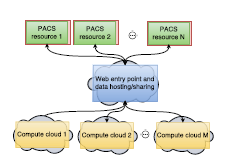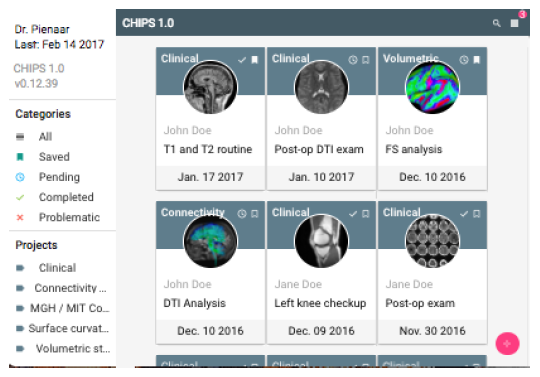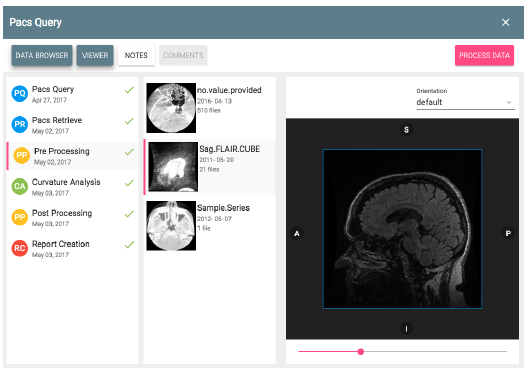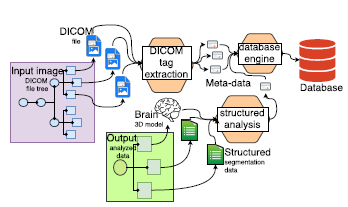Introduction
CHIPS (Cloud Healthcare Image Processing Service) is a cloud-based platform designed to facilitate the retrieval, organization, processing, and sharing of medical image data. With the increasing reliance on web-based applications, CHIPS leverages modern web technologies and containerized computing to provide a seamless, secure, and efficient system for managing medical imaging workflows.
This post summarizes the research paper introducing CHIPS and highlights its key functionalities, architecture, and impact on medical imaging.
Key Features of CHIPS
CHIPS provides several important features that enhance the management of medical imaging data:
- Secure Data Retrieval: Authenticated and encrypted access to hospital imaging systems (PACS) ensures secure data transfers.
- Web-Based Interface: Users can manage and visualize imaging data through a modern, feed-like web UI.
- Cloud-Based Processing: CHIPS utilizes containerized computing resources to analyze medical images efficiently.
- Real-Time Collaboration: Integrated tools allow multiple users to interact with imaging data simultaneously.
- Automated Pipelines: A growing library of plugins enables automated processing and analysis of medical images.
System Architecture
The CHIPS platform is designed using a distributed architecture consisting of several interconnected components:

Figure 1: The internal CHIPS logical architecture.
1. Input Data Sources
CHIPS connects with the hospital Picture Archive and Communication Systems (PACS) to collect medical images. It supports anonymization processes to comply with data privacy regulations.

Figure 2: CHIPS connects multiple input PACS sources to multiple “cloud” compute nodes.
2. Cloud-Based Processing
Data processing is handled using containerized services that distribute tasks across multiple cloud resources. This ensures scalability and efficiency in analyzing large medical imaging datasets.
3. Web-Based User Interface
The front-end interface provides an intuitive way for users to organize, annotate, and share imaging data. A visualization module allows real-time 3D rendering of medical images.
4. Real-Time Collaboration
Users can invite colleagues to review and process imaging data collaboratively using secure, cloud-based sharing mechanisms.
UI and Workflow
Home Page View
The home page displays a card-based organization system where users can manage imaging datasets efficiently.

Figure 3: CHIPS home page with organized imaging data.
Data Processing Workflow
Users can apply various processing pipelines to their imaging data. CHIPS supports advanced imaging techniques such as segmentation, reconstruction, and volumetric analysis.

Figure 4: Visualizing and processing medical image data.
Big Data and AI Integration
CHIPS is designed to support future big data applications and machine learning models:
- Predictive Analytics: CHIPS can store and process large imaging datasets for training AI models.
- Automated Diagnosis: AI-assisted tools can analyze imaging data for early disease detection.
- Data Mining: Structured metadata from medical images can be used for clinical research and pattern recognition.

Figure 5: Big data pre-processing.
Conclusion
CHIPS represents a significant advancement in cloud-based medical imaging management. By integrating secure data handling, real-time collaboration, and cloud processing, it provides an efficient and scalable solution for healthcare professionals and researchers.
The future direction of CHIPS includes further AI integration, enhanced data analytics, and broader adoption across medical institutions.
Reference
Pienaar, R., Turk, A., Bernal-Rusiel, J., Rannou, N., Haehn, D., Grant, P. E., & Krieger, O. (2017). CHIPS – A Service for Collecting, Organizing, Processing, and Sharing Medical Image Data in the Cloud. arXiv preprint arXiv:1710.00734.